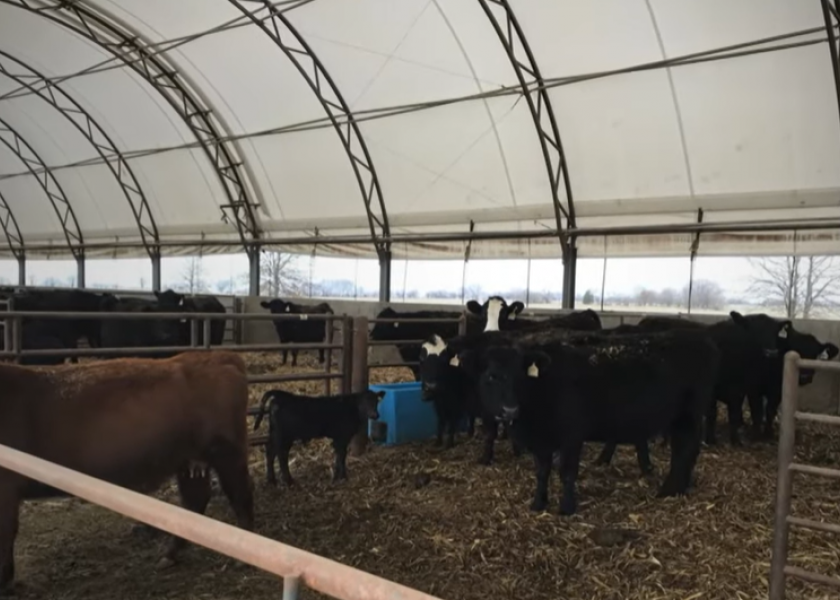3 Health Considerations for Cow/Calf Confinement Operations

While most cow-calf operations are still pasture-based, confinement facilities are gaining traction in the U.S. With them come a host of routine health concerns for veterinarians and producers.
In general, more attention must be given to enhance biosecurity in those facilities to prevent disease from being transmitted between animals, says Dr. Dan Thomson, a veterinarian with Production Animal Consultation and a faculty member at Iowa State University.
“When we have these animals in close proximity, it's no different than if we have the flu or a cold bug going around as a result of people having been in a room together,” he says.
In a March edition of his program, Doc Talk (available here: https://bit.ly/3LM6JcB), Thomson addressed the three most common health concerns he has for confinement operations. Here’s a brief summary.
1. As on pasture, beef calves born in confinement need colostrum early.
“When those calves get up, we want to make sure they suckle,” he says. “If they don't get colostrum within the first six to 12 hours, we've got to get in there and either milk the cow and give them the colostrum, or we've got to use a colostrum replacement.”
A routine vaccination program, especially to prevent rotavirus and coronavirus, supports cow health and colostrum development prior to gestation and helps stave off outbreaks of calf diarrhea/scours, he adds.
2. Good ventilation is a cornerstone for well-managed confinement operations.
A stale barn or barn without appropriate air movement is no friend to cows or calves, especially during the high temperatures of summer.
“These monoslope barns and hoop barns (can be made) 20- to 25-degrees cooler because of shade and air speed,” he says.
Adequate ventilation also helps keep bedding dry, which can help producers minimize respiratory disease and scours.
3. Focus on maintaining a clean environment.
Pen conditions must be checked and well-maintained consistently and fresh bedding provided to minimize disease.
“You can add to the bedding somewhat, but you’ve got to clean those pens routinely. We don’t want hairy heel wort or a foot rot getting in there,” he says.
Data from a survey of South Dakota cattlemen shows that producers may clean bedding anywhere from four times per week to every two weeks. However, the majority are cleaning two to three times per week, according to Heidi Carroll, South Dakota State University Extension field Specialist and beef quality assurance coordinator
"Average bedding was reported around 4.25 pounds per head per day with a range of 2 to 10 pounds at the time of the survey; today’s average may be closer to 5 to 7 pounds," she says in a 2020 article (see https://bit.ly/3w2U3Y0).
Morbidity from digital dermatitis can vary from one or two animals being affected in the herd to large outbreaks of over 25 percent affected, according to Iowa State University research.
Lameness can account for up to 70 percent of all sales of non-performing cattle, adds Arturo Gomez, DVM, Zinpro,
“If we have a pen outbreak, most of the time we're going to walk those animals through a foot bath of formaldehyde or copper sulfate, and we're going to treat the individual cases with some sort of tetracycline salve,” Thomson says.
For more insights on beef cattle confinement operations, check out Dr. Thomson’s program Doc Talk on YouTube at https://bit.ly/3LM6JcB
In addition, check out this in-depth article written by Grant Dewell, DVM, associate professor in beef production and extension beef veterinarian, and Terry Engelken, DVM, associate professor of veterinary diagnostic and production animal medicine at Iowa State University. Health Considerations for Confined Cow-Calf Operations







